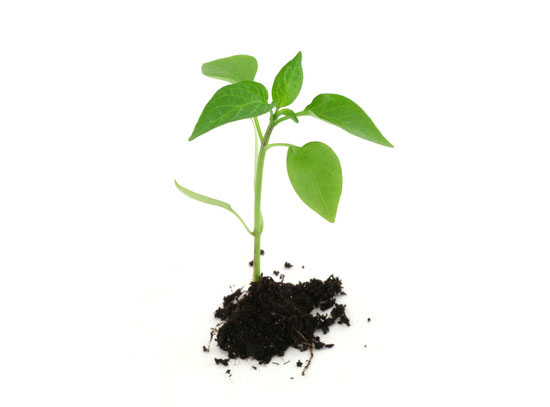
We are delivering organic soil in Vancouver area
With the gardening knowledge & expertise we can choose a proper soil for your organic garden. In over 15 years we have developed genuine resources for prime organic soils. We deliver it to our customers and let them enjoy the benefits of organic produce. The type of soil we deliver is the best soil Vancouver has to offer; it is clear from weeds, so you don't have to worry about weed infestation in the following years.
Call Mark for more info 604.999.3478
Related readings:


What is Organic Soil?
Organic soil is gardening soil which contains only ingredients which have been certified as organic. There are a number of types of organic soil, including organic potting soil, organic soil for backfill, and organic soil specifically designed for vegetable or flower gardens. Many gardening stores carry organic soil in a variety of formats, along with other organic gardening accessories, like organic mulch.
While one might not necessarily think of soil as “inorganic” in the sense of “unnatural,” many commercial soils include high levels of chemical fertilizers, pesticides, fungicides, and herbicides. Soil is usually designed to encourage rapid, healthy plant growth while discouraging insects, fungi, and weeds, and commercial soil accomplishes this at any cost. Organic soil, by contrast, does not contain chemical ingredients, providing a rich substrate for plants to grow and using natural means in an attempt to control pests.
Instead of using chemical fertilizers, organic soil is amended with compost from organic sources, and manure from organically-fed animals. It may also be amended with things like mycelium, which helps the soil retain water and nutrients, along with organic mulch to aerate the soil and make it looser. Just like standard commercial soil, organic soil can be formulated for specific environments and uses, with varying pH balances and levels of nutrients. Good organic soil is extremely dark, moist, and fragrant.
For gardeners, there are several advantages to organic soil. Some gardeners prefer to grow organic, in which case organic soil is their only option. Organic soil is also less likely to produce harmful runoff which could cause problems in local waterways, making it a more environmentally-sound choice than commercial soil. Some people also think that organic soil is better for the Earth and the garden, since it promotes slow, healthy plant growth, rather than rapid growth, which may strip the soil of nutrients.
Bags of organic soil can be purchased for various gardening applications, and it can also be delivered by the truckload. Some people use organic soil for backfill, digging out and removing exhausted, rocky, or contaminated soil and replacing it with new organic soil. Organic soil can also be spread on top of existing soil, adding a layer to the garden, which can be useful when people want to raise the height of their yards or flowerbeds.
Organic soil tends to be more expensive than conventional soil, and some gardeners prefer to build their own, working with organic compost, manure, and other ingredients to slowly build up the soil in their gardens. Ultimately, the choice between organic and conventional soil lies in the hands of the gardener. Gardeners who are worried about cost might want to look into sales at regional garden suppliers or government programs which help gardeners buy clean soil after contamination, plant disease, flooding, and similar incidents.
Organic and Non-organic Soil Components:
2.1 Types of Organic Compounds
2.1.1. Non-humic substances
2.1.2. Humic substances
Soil organic components
2.1. Types of organic compounds
Soil organic matter (SOM) can be of plant, animal, or microbial origin and may be relatively fresh or highly decomposed and transformed. In this course, terms “soil organic matter” and “humus” are considered synonyms.
One of many definitions of soil organic matter states that “it is a complex and rather resistant mixture of brown or dark brown amorphous and colloidal organic compounds that result from microbial decomposition and synthesis and has chemical and physical properties of great significance to soils and plants”.
Many species of fungi and bacteria soil particles decompose soil organic matter. The fungi and bacteria that can break down the woody tissues and cellulose of intact leaves, stems and dead roots of plants perform the function of decomposition of organic matter that often builds humus and returns nutrient back to the soil. When the species that are capable of decomposition are lacking, leaves and other organic matter remain intact and the food energy they contain are not released to drive the foodweb.
Soils may vary greatly in their organic matter contents. For example, a typical prairie grassland soil (Chernozem) may contain 5-6% SOM (by weight) in surface horizons, sandy desert soil may have <1% of SOM, while Organic soils (by definition) contain >30% SOM (by weight).
A simple test that allows qualitative comparison of soil organic matter content:
a) holds soil particles together and stabilizes the soil, thus reducing the risk of erosion;
b) aids crop growth by improving the soil's ability to store and transmit air and water;
c) stores and supplies many nutrients needed for the growth of plants and soil organisms;
d) prevents or minimizes soil compaction;
e) retains carbon from the atmosphere;
f) reduces the negative environmental effects of pesticides, heavy metals, and many other pollutants.
2.1.1. Non-humic substances
The physically and chemically heterogeneous mixture of materials that make up SOM varies substantially in terms of quantity and resistance to biological decomposition.
SOM includes primary components that are inherited from plant and animal residues entering the soil. Primary components are sometimes referred to as non-humic substances. These compounds are relatively easily decomposed by microorganisms and they persist in soil for a brief time (e.g. several months or years). They make about 20-30% of total SOM. These include
- carbohydrates and several derivatives (monosaccharides, and polisaccharides such as cellulose, hemiscellulose)
- amino acids and several derivatives (proteins)
- lignin (condensed polyphenil-propane structures of extremely large molecular weight, very resistant to microbial decomposition)
- lipids (a class of organic compounds which is a convenient analytical group rather than a specific type of compound. They include fats, oils, waxes, phospholipids, and resins)
- a variety of other compounds.
2.1.2. Humic substances
SOM also includes secondary compounds, compounds formed within the soil by breaking down organic structures and synthesizing new ones. The secondary components include carbohydrates, amino acids, lipids and others, more or less resembling many primary components. In addition, secondary components also include humic substances, which are rather different from most primary components.
Humic substances are products of biochemical decomposition. They are complex substances of high molecular weight, which are resistant to further decomposition. Consequently they tend to accumulate in the soil. Most are dark and are hence responsible for the dark soil color that is commonly associated with soils of high organic matter content. Humic substances make up 60-80% of total SOM.
Humic substances can be classified based on their behavior in acids and bases. There are three general groups of humic substances: (1) fulvic acids, (2) humic acids, and (3) humin. These three groups are nondescript mixtures of many chemical compounds and should not be considered as distinct chemical entities.
Humins are particles with large molecular weight, relatively small specific surface area, relatively low number of carboxyl groups, and are inactive.
Humic acids are smaller in size then humins (approximately colloid-sized) and have more carboxyl groups than humins.
Fulvic acids are the smallest in size among humic substances, and have a large number of carboxyl groups per unit mass. For tis reasonthey are the most active among humic substances.
The humic substances posses carboxyl groups (*R-COOH), which give them their acidic character and make them effective in buffering soil pH:
R-COOH ↔ R-COO- + H+
*R represents any number of organic compounds.
In a common range of soil pH the overall charge on SOM is negative, due to dissociation of hydrogen ions from carboxyl and other functional groups.
Courtesy of Faculty of Land and Food Systems of British Columbia and Agricultural University of Wroclaw
